Japan–Thailand relations on:
[Wikipedia]
[Google]
[Amazon]
Japan–Thailand relations refer to bilateral relations between Japan and
https://web.archive.org/web/20071010122420/http://www.mfa.go.th/web/113.php "The Beginning of Relations with Buropean Nations and Japan"] ( archive.org, archive link). Thai Ministry of Foreign Affairs (2006). Originally located at http://www.mfa.go.th/web/113.php. In December 1605, John Davis, the famous English explorer, was killed by Japanese pirates off the coast of Siam (
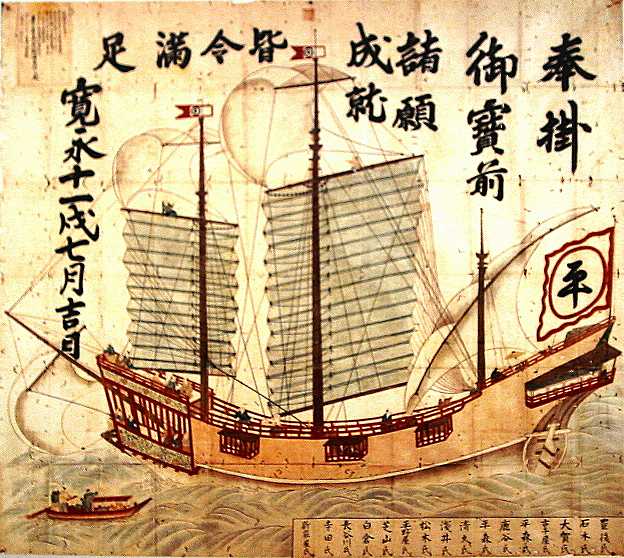
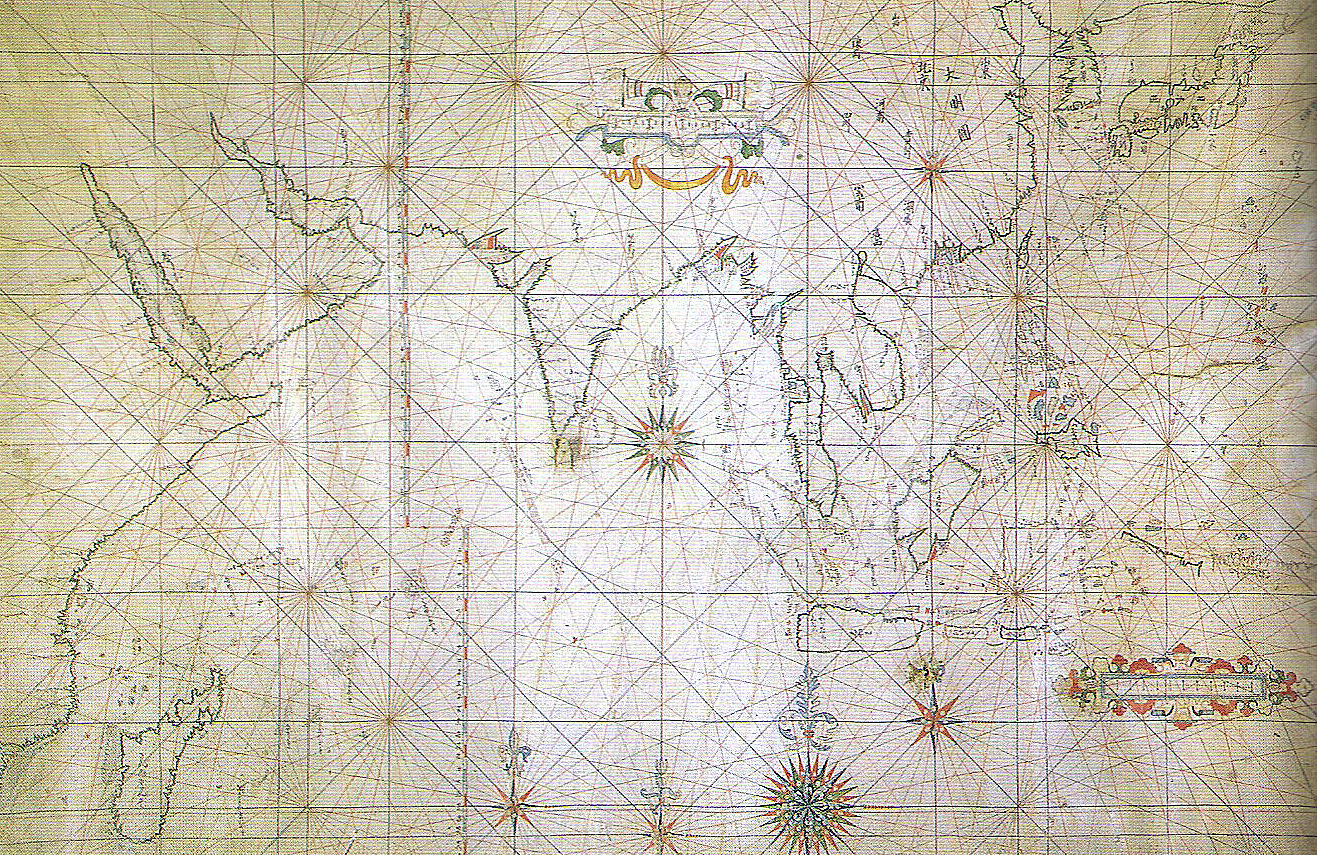 Around 56
Around 56
p. 7
A Japanese
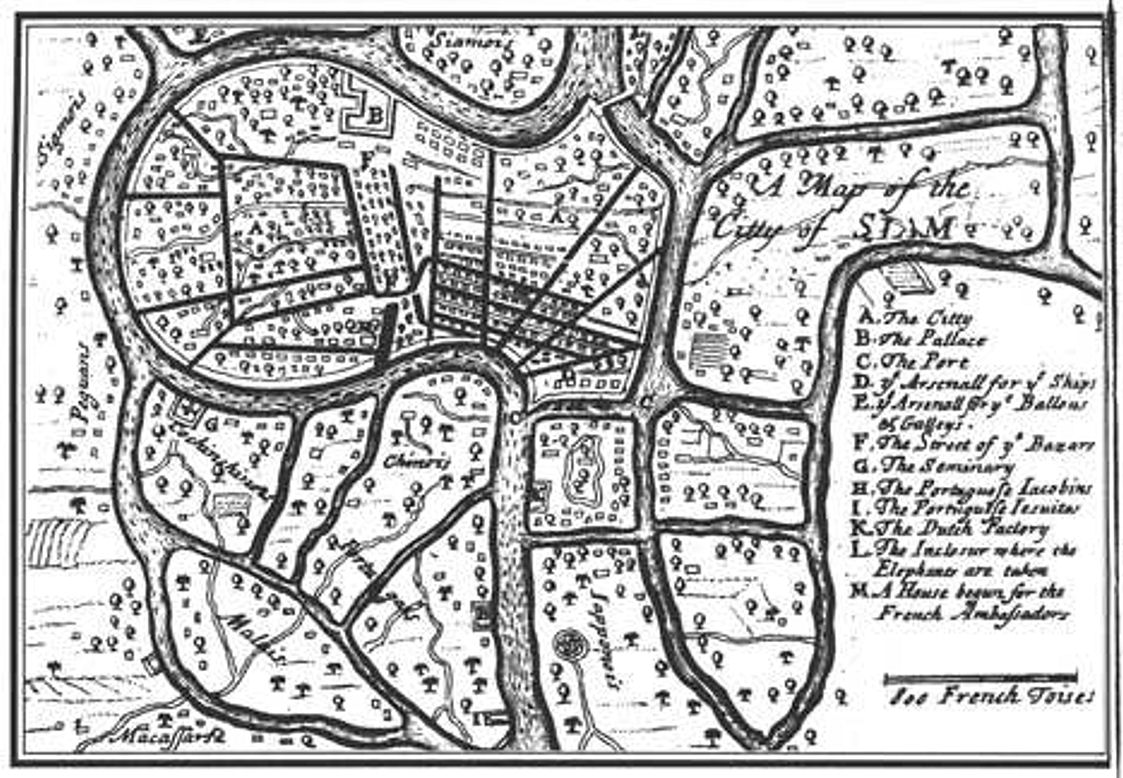 The Japanese quarters of Ayutthaya were home to about 1,500 Japanese inhabitants (some estimates run as high as 7,000). The community was called '' Ban Yipun'' in Thai, and was headed by a Japanese chief nominated by Thai authorities.Ishii Yoneo. "Siam and Japan in pre-modern times: a note on mutual images". In Denoon, p. 154. It seems to have been a combination of traders, Christian converts ("
The Japanese quarters of Ayutthaya were home to about 1,500 Japanese inhabitants (some estimates run as high as 7,000). The community was called '' Ban Yipun'' in Thai, and was headed by a Japanese chief nominated by Thai authorities.Ishii Yoneo. "Siam and Japan in pre-modern times: a note on mutual images". In Denoon, p. 154. It seems to have been a combination of traders, Christian converts ("
 A Japanese adventurer,
A Japanese adventurer,
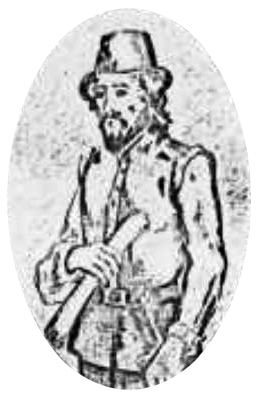 The English adventurer William Adams (1564–1620) who was based in Japan, led several trading ventures between Japan and Siam.
The English adventurer William Adams (1564–1620) who was based in Japan, led several trading ventures between Japan and Siam.
 The Japanese adventurer and writer Tenjiku Tokubei (1612c. 1692) (Jp:天竺徳兵衛) visited China,
The Japanese adventurer and writer Tenjiku Tokubei (1612c. 1692) (Jp:天竺徳兵衛) visited China,
Ministry of Foreign Affairs of Japan (December 2008). Accessed December 3, 2008.
"Thailand in Japan's Foreign Relations"
''Pacific Affairs'', Vol. 15, No. 2 (June 1942), p. 195. Thai troops initially opposed the Japanese invasion, but five hours after it received the Japanese ultimatum, the Thai cabinet ordered Thai troops to stop firing.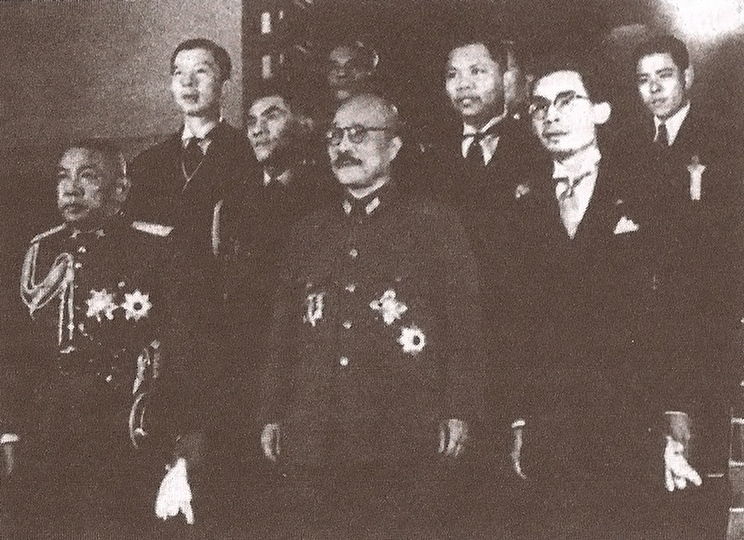 A Treaty of alliance was signed between Thailand and Japan on December 21, 1941, and on January 25, 1942 Thailand declared war on the United States and Great Britain But
A Treaty of alliance was signed between Thailand and Japan on December 21, 1941, and on January 25, 1942 Thailand declared war on the United States and Great Britain But
p. 209
 Japan has become again a key trading partner and foreign investor for Thailand. Japan is Thailand's largest supplier, followed by the United States. Since 2005, the rapid ramp-up in export of automobiles of Japanese makes (esp.
Japan has become again a key trading partner and foreign investor for Thailand. Japan is Thailand's largest supplier, followed by the United States. Since 2005, the rapid ramp-up in export of automobiles of Japanese makes (esp.
File:SuvarnabhumiJICAplaque.jpg, Plaque at Suvarnabhumi Airport
Embassy of Japan in Thailand
Embassy of Thailand in Japan
{{DEFAULTSORT:Japan-Thailand relations
Thailand
Thailand ( ), historically known as Siam () and officially the Kingdom of Thailand, is a country in Southeast Asia, located at the centre of the Indochinese Peninsula, spanning , with a population of almost 70 million. The country is b ...
. Contacts had an early start with Japanese trade on Red seal ships
were Japanese armed merchant sailing ships bound for Southeast Asian ports with red-sealed letters patent issued by the early Tokugawa shogunate in the first half of the 17th century. Between 1600 and 1635, more than 350 Japanese ships went ...
and the installation of Japanese
Japanese may refer to:
* Something from or related to Japan, an island country in East Asia
* Japanese language, spoken mainly in Japan
* Japanese people, the ethnic group that identifies with Japan through ancestry or culture
** Japanese diaspor ...
communities on Siamese soil, only to be broken off with Japan's period of seclusion. Contacts resumed in the 19th century and developed to the point where Japan is today one of Thailand's foremost economic partners. Thailand and Japan share the distinction of never having lost sovereignty to the Europe
Europe is a large peninsula conventionally considered a continent in its own right because of its great physical size and the weight of its history and traditions. Europe is also considered a subcontinent of Eurasia and it is located entirel ...
an powers during the colonial period, and both countries were Axis
An axis (plural ''axes'') is an imaginary line around which an object rotates or is symmetrical. Axis may also refer to:
Mathematics
* Axis of rotation: see rotation around a fixed axis
* Axis (mathematics), a designator for a Cartesian-coordinat ...
partners during the later part of World War II
World War II or the Second World War, often abbreviated as WWII or WW2, was a world war that lasted from 1939 to 1945. It involved the vast majority of the world's countries—including all of the great powers—forming two opposing ...
.
First contacts
As early as 1593, Siamese chronicles record that the Siamese kingNaresuan
King Naresuan the Great (( th, สมเด็จพระนเรศวรมหาราช, , ) or Sanphet II ( th, สรรเพชญ์ที่ ๒), ( my , နရဲစွမ် (သို့) ဗြနရာဇ်); 1555/1556 – ...
had 500 Japanese soldiers in his army when he defeated Phra Maha Uparaja, the Burmese Crown Prince
A crown prince or hereditary prince is the heir apparent to the throne in a royal or imperial monarchy. The female form of the title is crown princess, which may refer either to an heiress apparent or, especially in earlier times, to the wi ...
, in a battle on elephant-back."The Beginning of Relations with Buropean Nations and Japan"https://web.archive.org/web/20071010122420/http://www.mfa.go.th/web/113.php "The Beginning of Relations with Buropean Nations and Japan"] ( archive.org, archive link). Thai Ministry of Foreign Affairs (2006). Originally located at http://www.mfa.go.th/web/113.php. In December 1605, John Davis, the famous English explorer, was killed by Japanese pirates off the coast of Siam (
Thailand
Thailand ( ), historically known as Siam () and officially the Kingdom of Thailand, is a country in Southeast Asia, located at the centre of the Indochinese Peninsula, spanning , with a population of almost 70 million. The country is b ...
), thus becoming the first Englishman to be killed by a Japanese.Turnbull, p. 12.
Red seal trade
 Around 56
Around 56 Red seal ships
were Japanese armed merchant sailing ships bound for Southeast Asian ports with red-sealed letters patent issued by the early Tokugawa shogunate in the first half of the 17th century. Between 1600 and 1635, more than 350 Japanese ships went ...
to Siam are recorded between 1604 and 1635. By around 1620, the trade between Siam and Japan was larger than the total trade of Siam with all other nations.Tarlingp. 7
A Japanese
colony
In modern parlance, a colony is a territory subject to a form of foreign rule. Though dominated by the foreign colonizers, colonies remain separate from the administration of the original country of the colonizers, the '' metropolitan state' ...
was established in Siam. The colony was active in trade, particularly in the export of deer-hide and sappan wood to Japan in exchange for Japanese silver
Silver is a chemical element with the symbol Ag (from the Latin ', derived from the Proto-Indo-European ''h₂erǵ'': "shiny" or "white") and atomic number 47. A soft, white, lustrous transition metal, it exhibits the highest electrical ...
and Japanese handicrafts (swords, lacquered boxes, high-quality papers). From Siam, Japan was interested in purchasing Chinese silks, as well as deerskin
Leather is a strong, flexible and durable material obtained from the tanning, or chemical treatment, of animal skins and hides to prevent decay. The most common leathers come from cattle, sheep, goats, equine animals, buffalo, pigs and hogs ...
s and ray or shark skins (used to make a sort of shagreen
Shagreen is a type of rawhide consisting of rough untanned skin, historically from a horse's or onager's back, or from shark or ray.
Etymology
The word derives from the French ''chagrin'' and is related to Italian ''zigrino'' and Venetian '' ...
for Japanese sword handles and scabbard
A scabbard is a sheath for holding a sword, knife, or other large blade. As well, rifles may be stored in a scabbard by horse riders. Military cavalry and cowboys had scabbards for their saddle ring carbine rifles and lever-action rifles on the ...
s).
The Japanese were noted by the Dutch
Dutch commonly refers to:
* Something of, from, or related to the Netherlands
* Dutch people ()
* Dutch language ()
Dutch may also refer to:
Places
* Dutch, West Virginia, a community in the United States
* Pennsylvania Dutch Country
People E ...
for challenging the trade monopoly of the Dutch East India Company
The United East India Company ( nl, Verenigde Oostindische Compagnie, the VOC) was a chartered company established on the 20th March 1602 by the States General of the Netherlands amalgamating existing companies into the first joint-stock ...
(VOC), as their strong position with the King of Siam typically allowed them to buy at least 50% of the total production, leaving small quantities of a lesser quality to other traders.
The king of Siam sent numerous embassies
A diplomatic mission or foreign mission is a group of people from a state or organization present in another state to represent the sending state or organization officially in the receiving or host state. In practice, the phrase usually deno ...
to Japan: in 1621, an embassy led by Khun Pichitsombat and Khun Prasert, in 1623 by Luang Thongsamut and Khun Sawat, and in 1626 by Khun Raksasittiphon. Letters from King Songtham
Songtham ( th, ทรงธรรม, ) or Intharacha III was the King of Ayutthaya from 1610/11 to 1628 of the House of Sukhothai. His reign marked the prosperity of the Ayutthaya kingdom after it regained independence from Toungoo Dynasty, and ...
praise the relationship between the two countries:
The ''shōgun'' responded in similar terms:
Japanese community in Siam
 The Japanese quarters of Ayutthaya were home to about 1,500 Japanese inhabitants (some estimates run as high as 7,000). The community was called '' Ban Yipun'' in Thai, and was headed by a Japanese chief nominated by Thai authorities.Ishii Yoneo. "Siam and Japan in pre-modern times: a note on mutual images". In Denoon, p. 154. It seems to have been a combination of traders, Christian converts ("
The Japanese quarters of Ayutthaya were home to about 1,500 Japanese inhabitants (some estimates run as high as 7,000). The community was called '' Ban Yipun'' in Thai, and was headed by a Japanese chief nominated by Thai authorities.Ishii Yoneo. "Siam and Japan in pre-modern times: a note on mutual images". In Denoon, p. 154. It seems to have been a combination of traders, Christian converts ("Kirishitan
The Japanese term , from Portuguese ''cristão'' (cf. Kristang), meaning "Christian", referred to Catholic Christians in Japanese and is used in Japanese texts as a historiographic term for Catholics in Japan in the 16th and 17th centuries. ...
") who had fled their home country to various Southeast Asian countries following the persecutions of Toyotomi Hideyoshi
, otherwise known as and , was a Japanese samurai and ''daimyō'' (feudal lord) of the late Sengoku period regarded as the second "Great Unifier" of Japan.Richard Holmes, The World Atlas of Warfare: Military Innovations that Changed the Cour ...
and Tokugawa Ieyasu
was the founder and first ''shōgun'' of the Tokugawa Shogunate of Japan, which ruled Japan from 1603 until the Meiji Restoration in 1868. He was one of the three "Great Unifiers" of Japan, along with his former lord Oda Nobunaga and fello ...
, and unemployed former samurai who had been on the losing side at the battle of Sekigahara.
Padre António Francisco Cardim
António Francisco Cardim (1596 – April 30, 1659) was a Portuguese Jesuit priest, missionary, and historian who recorded the events of the fathers and brothers of the Jesuit missions in China, Japan, and other places in the Far East.
Early l ...
recounted having administered sacrament to around 400 Japanese Christians in 1627 in the Thai capital of Ayuthaya ("a 400 japoes christaos") There were also Japanese communities in Ligor
Nakhon Si Thammarat Municipality ( th, เทศบาลนครนครศรีธรรมราช, ; from Pali ''Nagara Sri Dhammaraja'') is a municipality (''thesaban nakhon'') in Southern Thailand, capital of Nakhon Si Thammarat prov ...
and Patani
Patani Darussalam ( Bahasa Malayu Arabic : , also sometimes Patani Raya or Patani Besar, "Greater Patani"; th, ปาตานี) is a historical region in the Malay peninsula. It includes the southern Thai provinces of Pattani, Yala (Jal ...
.Boxer, p.297
The Japanese colony was highly valued for its military expertise, and was organized under a "Department of Japanese Volunteers" (''Krom Asa Yipun'') by the Thai king.
Contacts with other communities were not always smooth: in 1614, men of the English East India Company killed eight Japanese in a fight in the city of Ayutthaya.
Yamada Nagamasa (1612–1630)
 A Japanese adventurer,
A Japanese adventurer, Yamada Nagamasa
was a Japanese adventurer who gained considerable influence in the Ayutthaya Kingdom at the beginning of the 17th century and became the governor of Nakhon Si Thammarat province, which is on the Malay Peninsula in present-day Southern Thailand. ...
, became very influential and ruled part of the kingdom of Siam (Thailand) during that period. He settled in the kingdom of Ayutthaya (modern-day Thailand) from around 1612 and became the ruler of the Nakhon Si Thammarat province in southern Thailand.
William Adams (1614 and 1615)
 The English adventurer William Adams (1564–1620) who was based in Japan, led several trading ventures between Japan and Siam.
The English adventurer William Adams (1564–1620) who was based in Japan, led several trading ventures between Japan and Siam.
Tenjiku Tokubei (1627–1630)
 The Japanese adventurer and writer Tenjiku Tokubei (1612c. 1692) (Jp:天竺徳兵衛) visited China,
The Japanese adventurer and writer Tenjiku Tokubei (1612c. 1692) (Jp:天竺徳兵衛) visited China, Vietnam
Vietnam or Viet Nam ( vi, Việt Nam, ), officially the Socialist Republic of Vietnam,., group="n" is a country in Southeast Asia, at the eastern edge of mainland Southeast Asia, with an area of and population of 96 million, making i ...
and Siam
Thailand ( ), historically known as Siam () and officially the Kingdom of Thailand, is a country in Southeast Asia, located at the centre of the Indochinese Peninsula, spanning , with a population of almost 70 million. The country is bo ...
on board a Japanese Red Seal ship. Tokubei would stay for some time in Siam and again visit the country on board one of the ships of the Dutch adventurer Jan Joosten van Lodensteijn
Jan Joosten van Lodensteyn (or Lodensteijn; 1556–1623), known in Japanese as Yayōsu (耶楊子), was a native of Delft and one of the first Dutchmen in Japan, and the second mate on the Dutch ship ''De Liefde'', which was stranded in Japan ...
and returned with great wealth and numerous stories to tell.
Limitation of relations between Siam and Japan
Following Yamada's death in 1630, the new ruler and usurper king of SiamPrasat Thong
Prasat ThongThe Royal Institute. List of monarchs Ayutthaya''. ( th, ปราสาททอง, ; c. 1600–1656; 1629–1656) was the first king of the Prasat Thong dynasty, the fourth dynasty of the Siamese Ayutthaya Kingdom.
Accounts vary ...
(1630–1655) sent an army of 4000 soldiers to destroy the Japanese settlement in Ayutthaya, but many Japanese managed to flee to Cambodia
Cambodia (; also Kampuchea ; km, កម្ពុជា, UNGEGN: ), officially the Kingdom of Cambodia, is a country located in the southern portion of the Indochinese Peninsula in Southeast Asia, spanning an area of , bordered by Thailan ...
. A few years later in 1633, returnees from Indochina were able to re-establish the Japanese settlement in Ayutthaya (300–400 Japanese).
From 1634, the ''shōgun'', informed of these troubles and what he perceived as attacks on his authority, refused to issue further Red Seal ship permits for Siam. Desirous to renew trade however, the king of Siam sent a trading ship and an embassy to Japan in 1636, but the embassies were rejected by the ''shōgun''. Japan was concomitantly closing itself to the world at that time, essentially to protect itself from Christianity
Christianity is an Abrahamic monotheistic religion based on the life and teachings of Jesus of Nazareth. It is the world's largest and most widespread religion with roughly 2.38 billion followers representing one-third of the global pop ...
, initiating the "Closed Country", or Sakoku, period. The Dutch took over a large part of the lucrative Siam-Japan trade from that time on.
Continuing trade
More embassies would be sent by Thailand to Japan, in 1656 during the reign of King Chaiyaracha and in 1687 during the reign of KingNarai
King Narai the Great ( th, สมเด็จพระนารายณ์มหาราช, , ) or Ramathibodi III ( th, รามาธิบดีที่ ๓ ) was the 27th monarch of Ayutthaya Kingdom, the 4th and last monarch of the P ...
. Although Japan was closing itself to trade (especially with Western countries, except for the Dutch Republic
The United Provinces of the Netherlands, also known as the (Seven) United Provinces, officially as the Republic of the Seven United Netherlands (Dutch: ''Republiek der Zeven Verenigde Nederlanden''), and commonly referred to in historiography ...
), many Siamese junks continued to visit Japan: between 1647 to 1700 the arrival of around 130 Siamese ships was recorded in Nagasaki. During the reign of Petracha as many as 30 junks are recorded to have left Ayutthaya for Nagasaki
is the capital and the largest Cities of Japan, city of Nagasaki Prefecture on the island of Kyushu in Japan.
It became the sole Nanban trade, port used for trade with the Portuguese and Dutch during the 16th through 19th centuries. The Hi ...
, Japan. From 1715, only one Siamese junk per year was allowed, but this was not insignificant compared to what other countries could trade with Japan.
Remaining Japanese communities in Siam
Japanese communities however remained in Siam, and numerous refugees from the persecutions of Christians in Japan also arrived in the country after the promulgation ofIeyasu
was the founder and first '' shōgun'' of the Tokugawa Shogunate of Japan, which ruled Japan from 1603 until the Meiji Restoration in 1868. He was one of the three "Great Unifiers" of Japan, along with his former lord Oda Nobunaga and f ...
's interdiction of Christianity in Japan in 1614. The famous Maria Guyomar de Pinha
Maria Guyomar de Pina ( th, มารีอา กียูมาร์ ดึ ปีญา; 1664 – 1728) (also known as ''Maria Guiomar de Pina'', ''Dona Maria del Pifia'' or as ''Marie Guimar'' and ''Madame Constance'' in French), Thao Thong Ki ...
, wife of the Greek adventurer Constantine Phaulkon
Constantine Phaulkon (Greek: Κωνσταντῖνος Γεράκης, ''Konstantinos Gerakis''; γεράκι is the Greek word for "falcon"; 1647 – 5 June 1688, also known as Costantin Gerachi, ''Capitão Falcão'' in Portuguese and simply as ' ...
, who became one of the most influential men in Siam in the end of the 17th century, was half-Japanese. In the second half of the 17th century, the French catholic missionaries in Siam cared for Annamite
The Vietnamese people ( vi, người Việt, lit=Viet people) or Kinh people ( vi, người Kinh) are a Southeast Asian ethnic group native to modern-day Northern Vietnam and Southern China (Jing Islands, Dongxing, Guangxi). The native lan ...
Christians and Japanese Christian communities in Siam.
Since the Tokugawa shogunate
The Tokugawa shogunate (, Japanese 徳川幕府 ''Tokugawa bakufu''), also known as the , was the military government of Japan during the Edo period from 1603 to 1868. Nussbaum, Louis-Frédéric. (2005)"''Tokugawa-jidai''"in ''Japan Encyclopedia ...
prohibited Japanese people established abroad to return to Japan, essentially as a protective measure against Christianity, the Japanese communities in Siam were gradually absorbed locally.
Resumption of contacts (19th century)
Relations resumed in the 19th century, with the establishment of the Declaration of Amity and Commerce between Japan and Siam in 26 September 1887, during the reigns of two icons of modernization, king Chulalongkorn in Siam and Emperor Meiji in Japan. Numerous Japanese experts were dispatched to Thailand to help modernize the country, in areas such as law, education andsericulture
Sericulture, or silk farming, is the cultivation of silkworms to produce silk. Although there are several commercial species of silkworms, '' Bombyx mori'' (the caterpillar of the domestic silkmoth) is the most widely used and intensively stud ...
."Japan-Thailand Relations"Ministry of Foreign Affairs of Japan (December 2008). Accessed December 3, 2008.
World War II: occupation and alliance
Siam was allied with Japan during World War II, following numerous pre-war diplomatic exchanges and the beginning of a Japanese invasion of Thailand. The Japanese had won from Phibun a secret verbal promise to support them in an attack on Malaya andBurma
Myanmar, ; UK pronunciations: US pronunciations incl. . Note: Wikipedia's IPA conventions require indicating /r/ even in British English although only some British English speakers pronounce r at the end of syllables. As John Wells explai ...
. However, the Thai Prime Minister was fickle and he was quite ready to forget this promise if circumstances changed. His government also asked both the British and Americans for guarantees of effective support if Thailand were invaded by Japan.
On 8 December 1941, the Japanese invasion of Thailand started at the same time as they invaded Malaya. The Japanese landed about 2,000 troops near Bangkok, and also made landings at Songkla
Songkhla ( th, สงขลา, ), also known as Singgora or Singora (Pattani Malay: ซิงกอรอ), is a city (''thesaban nakhon'') in Songkhla Province of southern Thailand, near the border with Malaysia. Songkhla lies south of Ba ...
and Prachuab (leading to the Battle of Prachuab Khirikhan).Christian, John L. and Nobutake Ike"Thailand in Japan's Foreign Relations"
''Pacific Affairs'', Vol. 15, No. 2 (June 1942), p. 195. Thai troops initially opposed the Japanese invasion, but five hours after it received the Japanese ultimatum, the Thai cabinet ordered Thai troops to stop firing.
 A Treaty of alliance was signed between Thailand and Japan on December 21, 1941, and on January 25, 1942 Thailand declared war on the United States and Great Britain But
A Treaty of alliance was signed between Thailand and Japan on December 21, 1941, and on January 25, 1942 Thailand declared war on the United States and Great Britain But Pridi Phanomyong
Pridi Banomyong ( th, ปรีดี พนมยงค์, , ; 11 May 1900 – 2 May 1983), also known by his noble title Luang Praditmanutham ( th, หลวงประดิษฐ์มนูธรรม) was a Thai politician and professo ...
acting as Regent for the absent King Ananda Mahidol
Ananda Mahidol ( th, พระบาทสมเด็จพระปรเมนทรมหาอานันทมหิดล; ; 20 September 1925 – 9 June 1946), posthumous reigning title Phra Athamaramathibodin ( th, พระอั� ...
refused to sign the declaration and the Thai ambassador to Washington, Seni Pramoj
Mom Rajawongse Seni Pramoj ( th, หม่อมราชวงศ์เสนีย์ ปราโมช, , ; 26 May 190528 July 1997) was three times the Prime Minister of Thailand, a politician in the Democrat Party, lawyer, diplomat and pr ...
, refused to deliver it. Seni organized the Seri Thai resistance movement, under direction of Pridi in the regency office. The Japanese then proceeded to invade next door Malaya and Singapore, both of which were British colonies. Thailand helped Japanese forces launch strikes against them.
Meanwhile, Japan stationed 150,000 troops on Thai soil. As the war dragged on, the Japanese increasingly dealt with Thailand as a conquered territory rather than as an ally. Though the United States had not officially declared war, on 26 December 1942, US Tenth Air Force bombers based in India launched the first major bombing raid that damaged Bangkok and other targets and caused several thousand casualties. Public opinion and, even more important, the sympathies of the civilian political elite, moved perceptibly against Phibun's alliance with Japan. By March 1944, Phibun was making arrangements with the Chinese Chungking Army in Yunnan
Yunnan , () is a landlocked province in the southwest of the People's Republic of China. The province spans approximately and has a population of 48.3 million (as of 2018). The capital of the province is Kunming. The province borders the C ...
to fight against the losing Japanese.Kratoskap. 209
Modern times
 Japan has become again a key trading partner and foreign investor for Thailand. Japan is Thailand's largest supplier, followed by the United States. Since 2005, the rapid ramp-up in export of automobiles of Japanese makes (esp.
Japan has become again a key trading partner and foreign investor for Thailand. Japan is Thailand's largest supplier, followed by the United States. Since 2005, the rapid ramp-up in export of automobiles of Japanese makes (esp. Toyota
is a Japanese multinational automotive manufacturer headquartered in Toyota City, Aichi, Japan. It was founded by Kiichiro Toyoda and incorporated on . Toyota is one of the largest automobile manufacturers in the world, producing about 10 ...
, Nissan, Isuzu) has helped to dramatically improve the trade balance, with over 1 million cars produced last year. As such, Thailand has joined the ranks of the world's top ten automobile exporting nations.
In 2007, a Japan-Thailand Economic Partnership Agreement was signed, aiming at free trade
Free trade is a trade policy that does not restrict imports or exports. It can also be understood as the free market idea applied to international trade. In government, free trade is predominantly advocated by political parties that hold econ ...
between the two countries after a transition period of 10 years.
See also
* Japanese language education in Thailand * List of Ambassadors of Japan to Thailand * Japan–Thailand Economic Partnership AgreementReferences
References
* Boxer C.R. ''The Christian Century in Japan''. Carcanet Press Limited (1993). . * Denoon, Donald et al. (editors). ''Multicultural Japan'' (Donald Denoon et al., editors).Cambridge University Press
Cambridge University Press is the university press of the University of Cambridge. Granted letters patent by King Henry VIII in 1534, it is the oldest university press in the world. It is also the King's Printer.
Cambridge University Pre ...
(2001). .
* Kincaid, Zoe. ''Kabuki: the Popular Stage of Japan''. Benjamin Blom (1965). OCLC number 711523.
* Kratoska, Paul H. ''Southeast Asian Minorities in the Wartime Japanese Empire''. Routledge (2002). .
* Reid, Anthony (editor). ''Southeast Asia in the Early Modern Era''. Cornell University Press
The Cornell University Press is the university press of Cornell University; currently housed in Sage House, the former residence of Henry William Sage. It was first established in 1869, making it the first university publishing enterprise in t ...
(1993). .
* Tarling, Nicholas. ''The Cambridge History of Southeast Asia: From C. 1500 to C. 1800'' Cambridge University Press (1999). .
* Turnbull, Stephen. ''Fighting ships of the Far East (2): Japan and Korea AD 612-1639''. Osprey Publishing (2002). .
Further reading
* * * * *External links
Embassy of Japan in Thailand
Embassy of Thailand in Japan
{{DEFAULTSORT:Japan-Thailand relations
Thailand
Thailand ( ), historically known as Siam () and officially the Kingdom of Thailand, is a country in Southeast Asia, located at the centre of the Indochinese Peninsula, spanning , with a population of almost 70 million. The country is b ...
Bilateral relations of Thailand